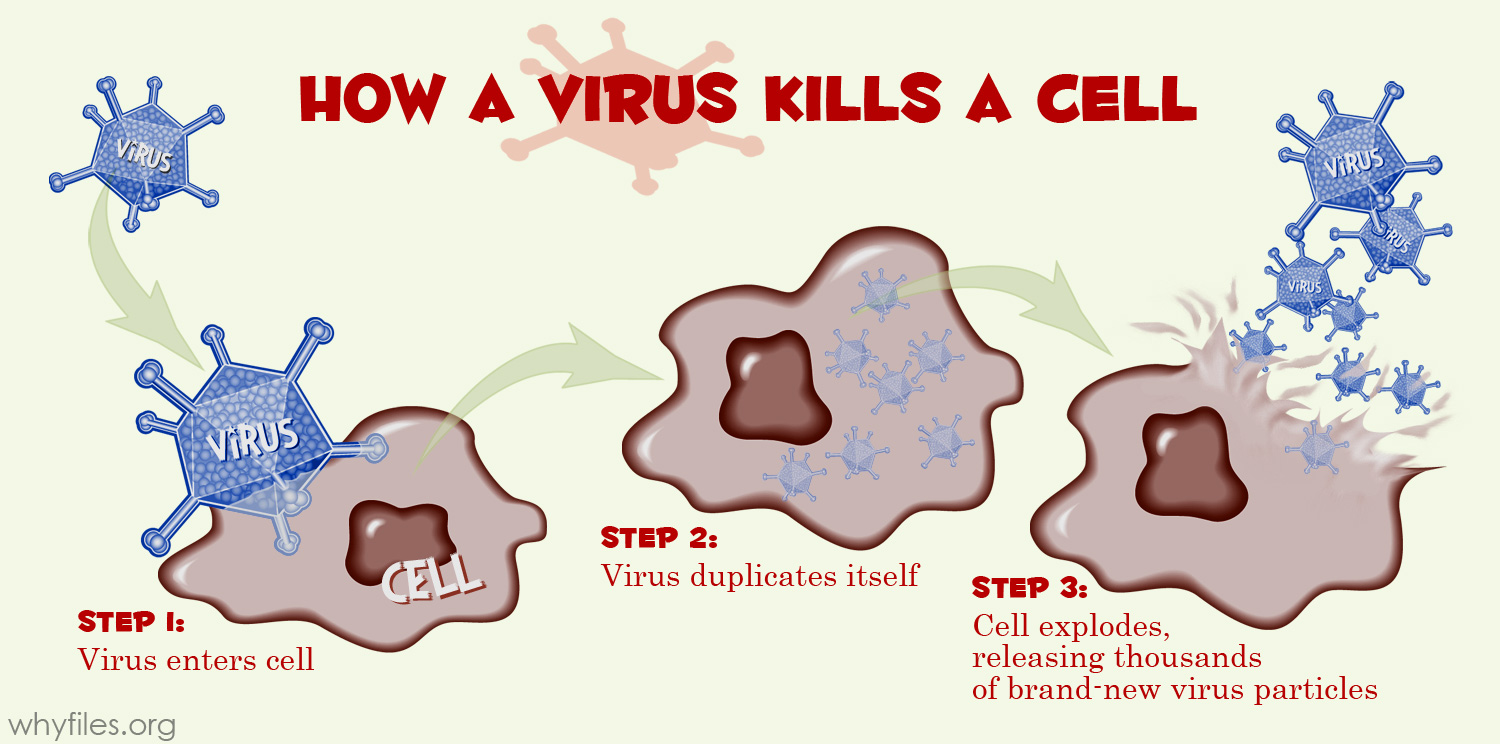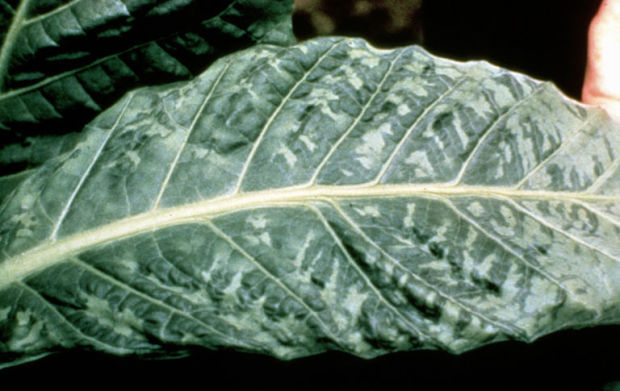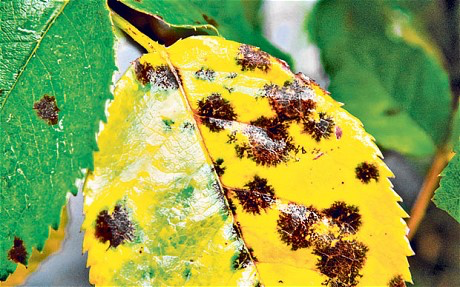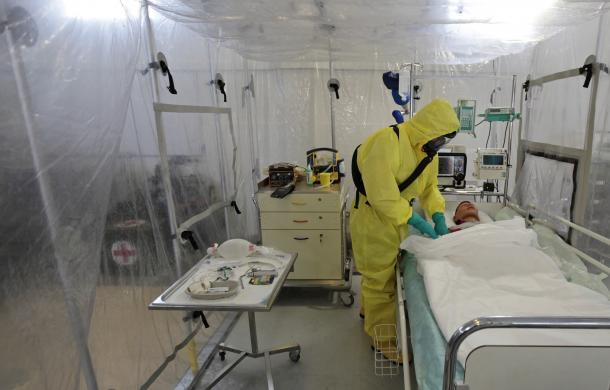Infection and Response
Communicable Disease
Pathogens:
- Pathogens are disease causing microorganisms. (Do NOT say, microorganisms that cause harm.)
Bacteria:
- Unicellular microorganisms (organism made out of one cell)
- Can cause harm by producing toxins.
- Bacteria do not always cause the host harm.
Viruses:
- Viruses are NOT cells, they are not living.
- Viruses are very small (smaller than bacteria)
- They use your cells machinery to replicate itself. The hundreds of replicated viruses burst out of the cell (destroying the cell) and infect cells around it.
- The cell death is what makes you feel ill.
- You will need to know about measles virus, HIV and tobacco mosaic virus (in the next section).
Protists:
- Lots of different types exist
- All protists are eukaryotes and most are single-celled
- Some protists are parasites
- A parasite is something that lives on or in an organism and causes harm.
- Protists are usually transferred to an organism through a vector (another species that carries the parasite but doesn’t get ill itself). For example, a mosquito carries a parasite and can pass it onto us if we get bitten by one. But the mosquito is not harmed by the protist.
Fungi:
- Some fungi are single celled
- Some have a body that is made up of thread-like structures called hyphae
- Hyphae can grow and penetrate (poke through) the skin and plants. They can them cause disease in the animal/plant.
- Hyphae can produce spores that can spread through the air and travel to other plants and animals.
Pathogens can spread through…
- Drinking or bathing in dirty water
- The air (i.e someone coughing or sneezing nearby)
- Direct contact (i.e touching an ill person)
Viral Disease
You will need to know about: Measles virus, HIV and the tobacco mosaic virus.
Measles
- Spread through droplets of sneeze or cough.
- Symptoms include red skin rash and fever
- Can be fatal if complications occur - i.e can go on to cause lung or brain infections
- Most people in developed countries (like the UK) are vaccinated against measles when they’re at school or very young.
HIV
- Sexually transmitted disease or transmitted through bodily fluids (i.e blood)
- Symptoms include a flu-like symptoms
- HIV attacks the immune system
- HIV can be kept under control for years with medicine, but if the HIV attacks the immune system too much, it is known as AIDS
- AIDS can be fatal since the body cannot protect against other pathogens. (Aids doesn’t kill you, but it stops your immune system from working so that other illnesses can kill you… even a little cough!)
Tobacco mosaic virus
- Affects plants
- Symptoms include a discoloration in leaves in a mosaic pattern.
- The mosaic pattern is actually the result of the cells dying. The plant can’t carry out photosynthesis with damaged leaf cells and soon die.
Fungal and Protist Diseases
Fungal disease example (you need to know)
Rose black spot (disease in rose plants):
- Spread through water or wind
- Symptoms include leaves turning yellow and dropping off. And purple-black spots forming on the leaves
- Less photosynthesis can happen and the plant will die if fungal infection spreads
- Gardeners can treat rose black spot by picking off and destroying infected leaves (so the fungus can’t spread) and using a fungicide (medicine that kills the fungus)
Protist diseases example (you need to know)
Malaria (infects humans and is carried by mosquitos)
- Mosquitos pick up the protist when they feed on an infected animal
- Mosquitos are the vector of this protist (they carry the protist but are not harmed themselves)
- The mosquito passes on this protist to every animal it feeds on.
- Symptoms include episodes of fever and can be fatal
- Malaria can be prevented by reducing the reproduction of mosquitos or by avoiding contact with mosquitos (not going out at night or using mosquito nets)
Bacterial Diseases
Bacterial disease examples (you need to know)
Salmonella food poisoning
- People can get infected with salmonella bacteria by eating food that’s contaminated with the bacteria
- Symptoms include: fever, stomach cramps, vomiting and diarrhoea. Symptoms are caused by a toxin the bacteria releases
- Most chickens and poultry are vaccinated against salmonella to prevent it from reaching humans.
Gonorrhoea
- Gonorrhoea is a sexually transmitted disease
- Symptoms include: pain when urinating and thick yellow discharge from the penis or vagina.
- Originally treated with penicillin but now strains of the bacteria have become resistant to penicillin
- To prevent the spread of gonorrhoea, people are advised to only contribute in protected sex and to take other antibiotic to treat if infected.
Reducing and Preventing the Spread of Disease
How to reduce or prevent the spread of disease:
- Be hygienic
- Destroy vectors - destroying the insects or animals that pass on the protist, this can prevent the protist reaching humans
- Isolate infected individuals - prevents that individual from passing it onto others whilst infected. I.e. a lot of hospitals have isolation wards where the doctors have to wear protective clothing to enter the room with an infected individual.
- Vaccination - there is more about this in the Vaccination section later on.
This is an isolation ward for the ebola virus - originally thought to be untreatable.



